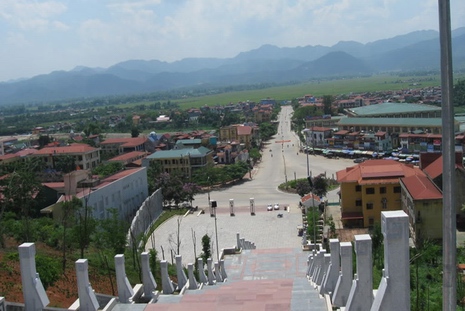|

For a long time Dien Bien Phu is a point of cultural and economic exchange
between people in the border area of Vietnam, Laos and China, it was also an
area of power dispute between land lords. Over centuries, there have been
numerous battles on the Muong Thank fields. Up until 1777 Dien Bien Phu was
officially formed, peace came back and people settled down. At a special
geographical position, where a sound of cock-crow can be heard by 3 nations,
Dien Bien has become a flourshing economic hub of the region, business people
from Vietnam, Laos and Myanmar and from China come here for trading. From Dien
Bien, commodities of all kinds are transported through Tay Trang border gate (30
km away) to Laos, Thailand in exchange for consumers goods to supply Hanoi and
north west provinces.
Dien Bien Phu is famous as a battlefield between French troops and Vietnam
communists in 1954, the battle lasted 56 days leading to the fall of French colonism in Indochina. A lot of French tourists have come to
visit Dien Bien Phu,
almost everyday, there is still a historical site left until today is A1 hill,
the main battle area of the war. At this low and small hill, more than 2000
Vietnam troops and 800 French soldiers were killed. History chose this small
region as a meeting point of military forces. Bunker Eliane 2, used as a wine
cellar for Japanese troops in the World War II was later used was the commander
bunker of the French stronghold throughout the 9 year war, the stronghold
collapsed after 1 night of fierce fighting and fell into the hands of Vietnam
army. Nowadays the wall are covered with green moss.
The historical complex is located at Muong Phang ward, 30km from Dien Bien city,
right beside legendary
Pa Khoang lake, a man made lake on top of a hill. A lot
of former Vietnamese soldiers came here to have a look back on their bloody and
heroic youth.
Behind the pompous beauty of the old town, the modern new town, Dien Bien Phu
with its charm attracts toursits from afar. People of Kinh, Thai, Hmong... with
their own life styles, cultures, clothes are all very friendly. |
